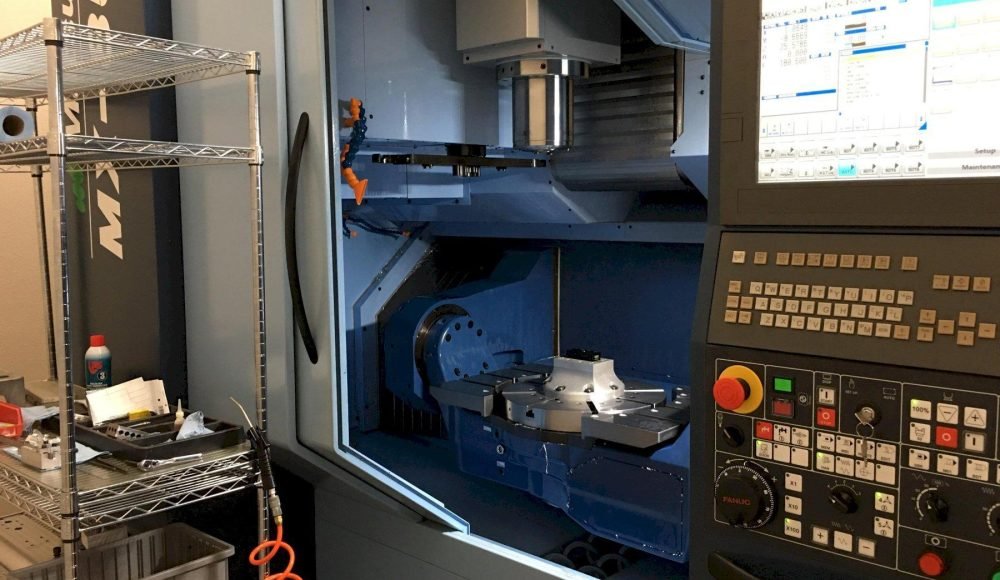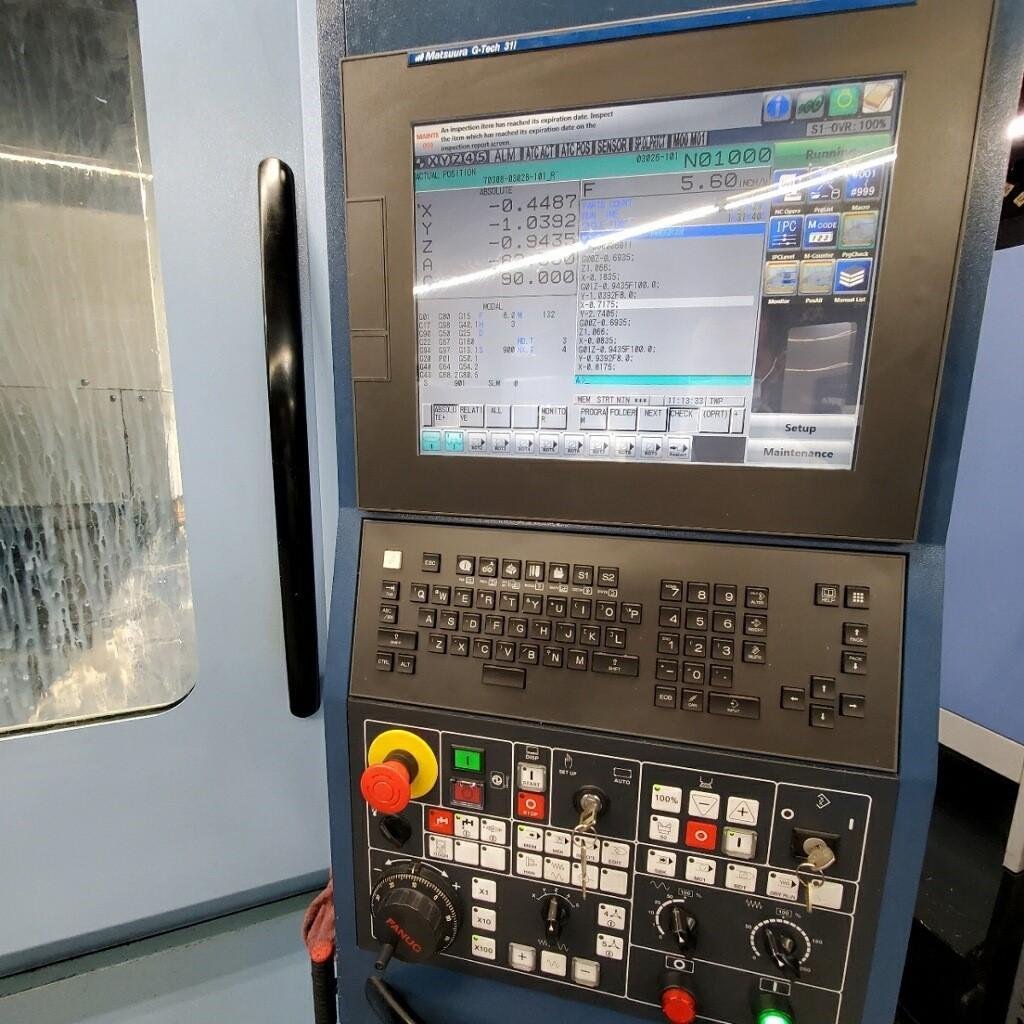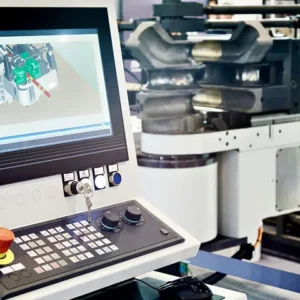En el mundo de la fabricación moderna, Los centros de mecanizado se han vuelto indispensables. Desde automóviles y aviones hasta intrincados dispositivos médicos, Los centros de mecanizado proporcionan una precisión inigualable, flexibilidad, y eficiencia. Esta guía completa se sumerge en el mundo de los centros de mecanizado, Detallando sus componentes, tipos, aplicaciones, y más.
¿Qué es un centro de mecanizado??
A centro de mecanizado (Mc) es un avanzado, Machine herramienta controlada por computadora capaz de realizar múltiples operaciones de mecanizado. A diferencia de las máquinas convencionales, que requieren ajustes manuales para los cambios de herramientas, Los centros de mecanizado están equipados con sistemas automatizados como cambiadores de herramientas automáticas (ATC), reduciendo significativamente el tiempo de inactividad y el aumento de la eficiencia de producción.
Los centros de mecanizado manejan numerosas tareas, incluidas:
Molienda
Perforación
Aburrido
tocando
Molienda
escariado
Su versatilidad permite a las industrias producir piezas complejas con extrema precisión..
Antecedentes históricos
El concepto del centro de mecanizado se remonta a principios de la década de 1950. Inventores Juan T.. Parsons y francisco. Robado colaborado para crear la primera fresca controlada numéricamente. Su trabajo pionero fue refinado por el Laboratorio de Servomecanías del Instituto de Tecnología de Massachusetts, Establecer las bases para los centros de mecanizado CNC de hoy en día. Esta tecnología revolucionaria introdujo la automatización, Aumentando drásticamente la precisión y la productividad en la fabricación.
Componentes principales de un centro de mecanizado
Los centros de mecanizado comprenden varios componentes complejos, cada crucial para operaciones precisas y eficientes:
1. Área del huso principal
Contiene herramientas de corte y proporciona la velocidad de rotación necesaria.
Determina la precisión del mecanizado y la calidad del acabado de la superficie.
2. Mecanismo de alimentación con cón
Posiciona con precisión las herramientas de corte.
Asegura la profundidad y el ángulo de la herramienta precisos durante el mecanizado..
3. Cambiador de herramientas automáticas (ATC)
Cambia rápida y eficientemente entre herramientas.
Reduce los tiempos de cambio de herramienta manual, Optimización de la productividad.
4. Revista de herramientas
Almacena varias herramientas de corte requeridas durante las operaciones.
Facilita la selección y reemplazo de herramientas rápidas.
5. Cambiador de paletas (APC)
Automatizar la carga/descarga de piezas de trabajo.
Reduce significativamente el tiempo de inactividad y aumenta el rendimiento.
6. Sistema de manejo de chips y refrigerante
Elimina chips y ofrece refrigerante para mantener la eficiencia de la herramienta y la longevidad.
Mantiene el espacio de trabajo limpio y mejora la seguridad.
7. Detectores de sobrecarga y desgaste
Condiciones de la herramienta y la máquina de los monitores.
Previene el daño al detectar anomalías como la carga excesiva o el desgaste de la herramienta.
8. Operación de puerta automática
Proporciona un acceso seguro y conveniente al área de mecanizado.
Hachas de un centro de mecanizado
Los centros de mecanizado generalmente funcionan en múltiples ejes, habilitando un control preciso del movimiento de herramientas y de la pieza de trabajo:
Eje x: Movimiento horizontal (izquierda-derecha)
Eje y: Movimiento horizontal (delantero)
Eje z: Movimiento vertical (hacia arriba)
Eje A: Rotación alrededor del eje x
Eje b: Rotación alrededor del eje Y
Eje c: Rotación alrededor del eje z
Juntos, Estos ejes permiten movimientos intrincados necesarios para tareas de mecanizado complejas..
Tipos de centros de mecanizado
1. Centros de mecanizado horizontales (HMC): Precisión de lado a lado
que es:
Estas máquinas tienen su huso colocado horizontalmente, lo que significa que la herramienta corta del lado en lugar de desde arriba.
¿Por qué usarlo??
Ideal para más pesado, Piezas más grandes porque la gravedad ayuda a limpiar las fichas, Mantener su área de trabajo más limpia.
Mejor para:
Piezas automotrices grandes, Componentes de equipos pesados, y producción en masa donde la velocidad y la fuerza son clave.
2. Centros de mecanizado vertical (VMC): Versatilidad ascendente
que es:
Aquí, El huso apunta hacia abajo, con la herramienta cortando la parte superior de su pieza de trabajo.
¿Por qué usarlo??
Ideal para piezas más pequeñas y trabajo detallado. Estas máquinas encajan bien en espacios más estrictos y a menudo son más fáciles de operar y configurar.
Mejor para:
Proyectos pequeños a medianos, moldes, grabados, mecanizado de precisión detallado, y trabajo prototipo.
3. Centros de mecanizado universales (UMC): Flexibilidad todo en uno
que es:
Estas máquinas pueden rotar su huso tanto horizontal como verticalmente. A menudo son máquinas de 5 ejes, lo que significa que pueden cortar desde casi cualquier ángulo.
¿Por qué usarlo??
Perfecto para formas o piezas complejas que requieren múltiples operaciones sin mover la pieza a otra máquina.
Mejor para:
Piezas aeroespaciales, moldes complejos, equipo medico, y componentes de precisión que necesitan cortes de ángulo múltiple.
Operaciones de mecanizado típicas
1. Molienda: Cortando y formando
que es: Uso de herramientas giratorias para cortar el material y dar forma a una pieza de trabajo en diseños detallados.
Por qué es útil: Perfecto para crear formas complejas como ranuras, bolsillos, o superficies curvas.
2. Perforación: Hacer agujeros
que es: Creación de agujeros precisos usando brocas de perforación que giran y empujan el material.
Por qué es útil: Esencial para cualquier proyecto que necesite preciso, Limpie los agujeros para los tornillos, pernos, o accesorios.
3. Aburrido: Mejora de los agujeros existentes
que es: Ampliar y refinar agujeros para mejorar su precisión y suavidad.
Por qué es útil: Asegura que los agujeros existentes tengan un tamaño perfectamente, derecho, y listo para accesorios precisos.
4. tocando: Creación de hilos
que es: Cortar roscas internas dentro de un orificio para ajustar tornillos o pernos de forma segura.
Por qué es útil: Crítico para ensamblar piezas que necesitan estar firmes y seguras juntas.
5. Molienda: Lograr superficies suaves
que es: Uso de ruedas abrasivas para eliminar cuidadosamente el material, Creación de superficies ultra suaves.
Por qué es útil: Excelente para terminar las piezas donde la suavidad y las mediciones exactas son extremadamente importantes.
6. escariado: Acabado de precisión de agujeros
que es: Ajuste de agujeros previamente perforados a dimensiones precisas, suavidad, y redondez.
Por qué es útil: Esencial cuando el tamaño exacto del orificio y el acabado son importantes, como en componentes automotrices o aeroespaciales..
Aplicaciones de centros de mecanizado por industria
Los centros de mecanizado tienen amplias aplicaciones en diversas industrias:
Automotor
Componentes del motor, engranajes de transmision, piezas del chasis, sistemas de frenos.
Aeroespacial
Palas de turbina, trenes de aterrizaje, componentes estructurales complejos.
Médico
Instrumentos quirúrgicos, implantes, dispositivos protésicos.
Petróleo y gas
Cuerpos de válvulas, herramientas de perforación, componentes de bomba robustos.
Electrónica
Componentes de precisión como conectores., carcasas de semiconductores, disipadores de calor.
Marina
Hélices, piezas hidráulicas, componentes estructurales para barcos y submarinos.
Energía
Componentes para aerogeneradores, marcos solares, partes del reactor nuclear.
Construcción
Piezas de maquinaria pesada como engranajes., articulaciones, y elementos estructurales.
Costo de los centros de mecanizado
El costo varía significativamente según el tipo de máquina., tamaño, funcionalidad, y marca:
Centro de mecanizado horizontal: $150,000–$600.000
Centro de mecanizado vertical: $50,000- $ 200,000
Centro de mecanizado universal: $200,000–$700.000
5-Centros de mecanizado de ejes: $200,000–$1.000.000
Centros de torneado CNC: $60,000–$350.000
Personalizaciones, reputaciones de marca, y las características avanzadas influyen aún más en los precios.
Programación y control de centros de mecanizado
Los centros de mecanizado utilizan software y controles avanzados:
CANALLA (Diseño asistido por computadora): Crea modelos 3D precisos de componentes..
LEVA (Fabricación asistida por computadora): Traduce diseños CAD a código G.
código g: Instrucciones legibles por máquina que controlan los movimientos., velocidades, y rutas de herramientas.
Panel de control: Interfaz de usuario para gestionar operaciones de la máquina y entradas de programas..
Servomotores & Unidades: Convierte señales eléctricas en movimientos mecánicos precisos..
Sistemas de retroalimentación: Monitoreo y ajustes continuos durante el mecanizado..
Problemas y soluciones comunes
Los problemas típicos incluyen:
Desgaste de la herramienta: Causado por un uso incorrecto o una refrigeración inadecuada.
Vibración (Charla): Resultados de configuraciones o selección de herramientas inadecuadas.
Problemas con el refrigerante: La cantidad insuficiente de refrigerante puede causar sobrecalentamiento.
Pérdida de precisión: Debido al desgaste de los componentes mecánicos.
Errores de programación: Errores en procesos G-code o CAM.
Mantenimiento preventivo, entrenamiento adecuado, y una configuración cuidadosa mitiga estos problemas de manera efectiva.
Diferencias: Centro de mecanizado vs. Máquinas tradicionales
Los centros de mecanizado se diferencian significativamente de las máquinas tradicionales:
Automatización: Los centros de mecanizado cuentan con cambiadores automáticos de herramientas y paletas., reduciendo el trabajo manual.
Precisión: Los controles CNC mejoran la precisión y la repetibilidad.
Versatilidad: Capaz de realizar múltiples operaciones dentro de una configuración.
Eficiencia: Altas tasas de producción y tiempo de inactividad minimizado.
Conclusión
Los centros de mecanizado han transformado fundamentalmente la fabricación, mejorando la precisión, eficiencia, y flexibilidad. Desde aplicaciones automotrices hasta aplicaciones aeroespaciales y médicas, su papel en la fabricación de componentes complejos es indispensable. Con avances continuos en tecnología y software., Los centros de mecanizado sin duda desempeñarán un papel fundamental en la configuración de la producción industrial del futuro..
Preguntas frecuentes
1: ¿Es lo mismo un centro de mecanizado que una máquina CNC??
A: Un centro de mecanizado es un tipo de máquina CNC específicamente equipada para múltiples operaciones. (p.ej., molienda, perforación) con cambiadores automáticos de herramientas y sistemas de paletas.
2: ¿Con qué frecuencia se deben realizar mantenimientos a los centros de mecanizado??
A: Mantenimiento preventivo regular (Inspecciones semanales, cheques detallados mensuales, servicio completo anual) asegura la confiabilidad y el rendimiento a largo plazo.
3: ¿Pueden los centros de mecanizado manejar múltiples materiales??
A: Sí, Los centros de mecanizado están diseñados para manejar diversos materiales, incluyendo metales, plástica, y compuestos, ajustando las herramientas, velocidades de corte, y tipos de refrigerante.





